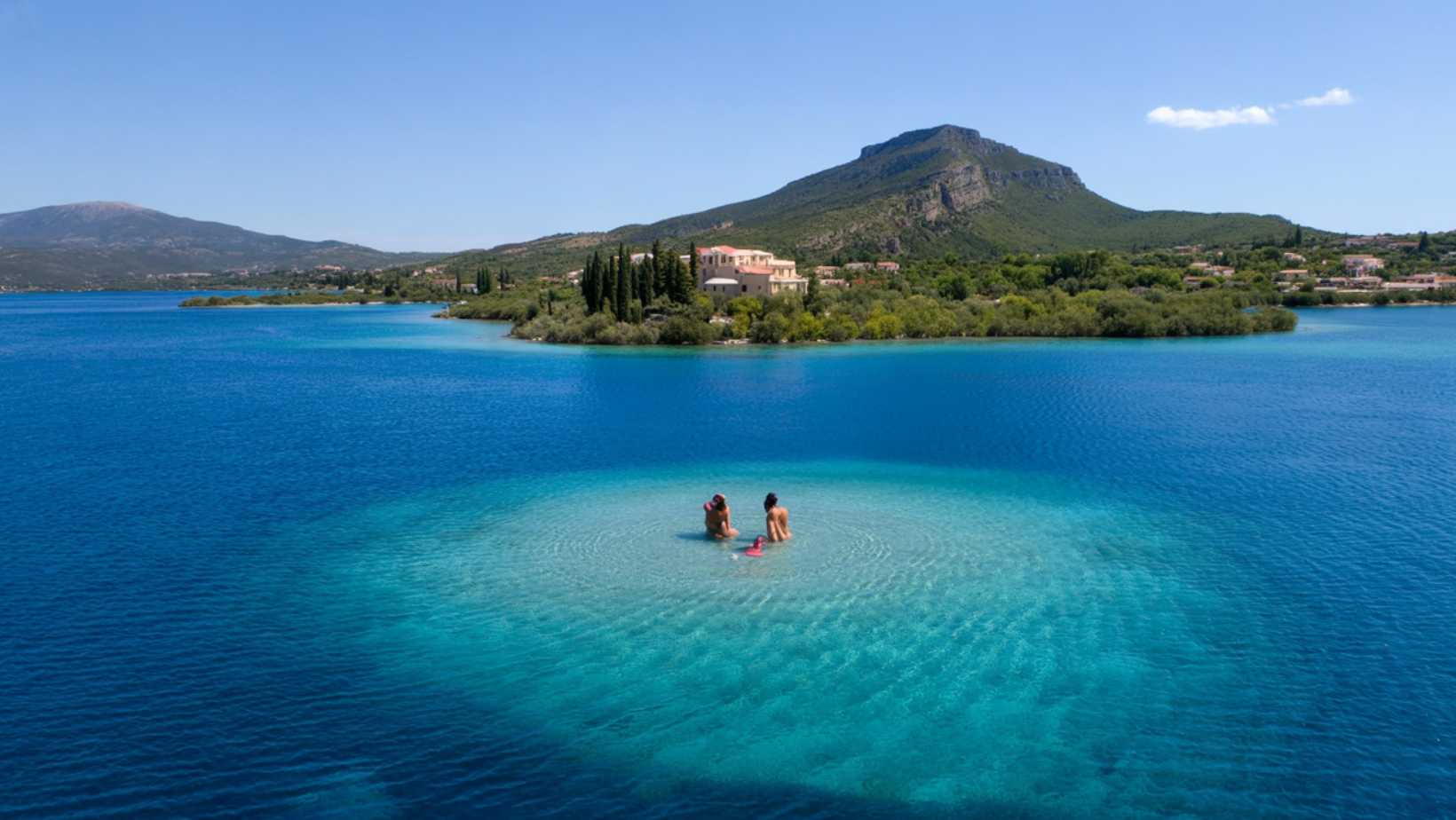The emerald jewel of the Adriatic sits quietly 25 miles southwest of Dubrovnik, beckoning travelers with promises of untouched wilderness and mythical allure. With more than one-third of its terrain protected as a national park, this verdant paradise boasts pristine saltwater lakes that shimmer like jewels against the Mediterranean backdrop. According to local legend, this enchanted island once captivated Odysseus himself, keeping the legendary hero spellbound for seven years—a claim that seems entirely plausible once you experience its hypnotic beauty.
You’ll find yourself mesmerized by the stunning salt lakes that change colors throughout the day
The island’s twin salt lakes—Veliko and Malo Jezero—stand as its crowning glory, with water temperatures reaching a balmy 77°F in summer. These interconnected azure pools were formed thousands of years ago when sea caves collapsed, creating a natural phenomenon that draws swimmers and kayakers seeking respite in their crystal-clear waters. The larger lake stretches over 58 acres and reaches depths of 137 feet, while its smaller sibling maintains a more intimate charm.
The lakes transform throughout the day, shifting from deep navy to vibrant turquoise depending on the sun’s position and cloud cover. I once spent an entire afternoon watching this natural light show from a kayak, completely losing track of time as the water beneath me changed from sapphire to emerald. The surrounding pine forests create a perfect natural amphitheater, amplifying the island’s peaceful ambiance.
For the best views, hike to Montokuc Hill in the early morning when the lakes capture the day’s first light—trust me, your Instagram followers will think you’ve discovered an untouched paradise that rivals the pristine sandbars of the Philippines.
You won’t believe the monastery built on its own little island within an island
In the middle of Veliko Jezero sits a true architectural marvel—a 12th-century Benedictine monastery built on its own tiny islet, creating an island within an island. The former monastery of St. Mary dates back to 1151 and represents one of the most unique religious sites in the Mediterranean. Its stone walls tell stories of monks who once lived in isolation, surrounded by water on all sides.
The boat ride to this mini-island takes just five minutes, but transports you centuries back in time. The monastery’s Romanesque architecture stands in magnificent contrast to the surrounding natural splendor. Inside, ancient walls keep temperatures surprisingly cool, even on the hottest summer days—a welcome relief after hiking the island’s trails.
Local fishermen still navigate these waters using traditional methods passed down through generations, creating scenes reminiscent of medieval times. This cultural preservation mirrors what you might find in tiny French villages where ancient traditions remain alive, though here it happens on water rather than land.
The moment you step into Odysseus Cave you’ll understand why legends say he never wanted to leave
Along the southern coast lies a geological wonder shrouded in mythology—Odysseus Cave. According to Homer’s epic, this sea-carved grotto served as the legendary hero’s first shelter after surviving a shipwreck. The cave’s entrance dramatically frames the azure Adriatic, creating a natural window to the sea that casts hypnotic blue reflections onto the stone walls.
Adventure seekers can swim into the cave from the sea, timing their visit for midday when sunlight penetrates the cavern, illuminating the water with an ethereal blue glow. The acoustics inside are remarkable—every splash reverberates against the ancient walls, creating natural music that has enchanted visitors for millennia. Local guides love to point out that the cave’s unique orientation aligns perfectly with sunset during the summer solstice.
Beyond its beauty, the cave represents one of the island’s most powerful connections to classical mythology. While other Mediterranean destinations may claim links to Odysseus, the natural splendor here makes it easy to believe that this could indeed be where the hero found himself unable to leave for seven years—much like modern travelers who find their planned day trips stretching into week-long stays among natural wonders that change colors with the shifting sunlight.
When darkness falls, the island transforms into a sanctuary for stargazers. With minimal light pollution, the Milky Way stretches across the night sky with remarkable clarity, concluding perfect days with cosmic spectacles that remind visitors of nature’s boundless wonders.
